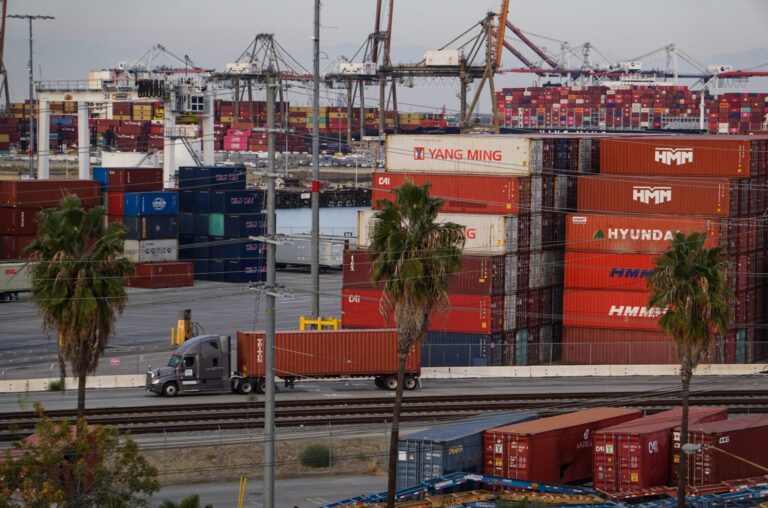Amid Gov. Ned Lamont’s multi-billion-dollar effort to improve commuter rail service along the New Haven and Hartford lines, a bipartisan group of lawmakers has begun pushing an even grander vision for rail travel in Connecticut.
That vision includes a return to full, pre-pandemic service along eastern Connecticut’s Shore Line East route, which has been plagued by low-ridership figures, and a hefty state subsidy that Lamont has sought to cut.
In the Naugatuck Valley, local lawmakers are fighting to add new trains and service to three additional stations along the Waterbury Branch line on top of the service upgrades that Lamont announced last year. And in the Northwest corner of the state, Republicans want to extend the Danbury Branch line to include service to New Milford — a distance of about 15 miles.
Each of those projects has been folded into a single piece of rail legislation by leaders on the Transportation Committee, which voted unanimously last month to send the bill to the Senate floor.
Proponents of the bill argue that secondary routes in Connecticut have long been hampered by a lack of investment from the state and that better service will spur ridership and economic development.
Shore Line East, for example, is only operating at two-thirds the level it did before the pandemic, while the more popular New Haven and Hartford lines have returned to full service. In his proposed budget for the next two fiscal years, Lamont has proposed cutting Shore Line East service even further to 44 percent of pre-pandemic levels. (The governor’s budget also proposed cutting New Haven line service to 86 percent of its pre-2020 level to reflect a slower-than-expected return of riders).
“At one point in time, the Shore Line East was a thriving, vibrant rail line that did a very successful job linking commuters to their places of employment, as well as to destination places along the shoreline,” said Jim Gildea, chair of the Connecticut Commuter Rail Council. “Then COVID came, and unfortunately, as with all the lines, it lost service numbers.”
Some rail advocates, however, described the push for new services as a misguided attempt to attract riders — who mostly live along well-established routes such as the New Haven Line.
“Fix what you’ve got before you start telling DOT how to spend money it doesn’t have,” said Jim Cameron, the president of the Commuter Action Group, which advocates for mass transit.
Since taking office in 2019, Lamont has mostly focused his rail agenda on increasing speeds along the state’s two most popular lines, which link New Haven and Hartford with New York City, while also investing in service upgrades along some existing branch lines, such as those to Danbury and Waterbury.
Last year, the governor and Metro-North touted new “super express” trains that quickened the trip between New Haven and Grand Central by 10 minutes. Lamont has promised to shave another 15 minutes off the trip by 2035, requiring an investment of up to $10 billion in infrastructure improvements.
Lamont’s office on Thursday referred comment on the bill to his commissioner of transportation, Garrett Eucalitto, who has raised concerns about the cost of the projects and the need to conduct additional studies.
“We appreciate the committee’s dedication to railroads in our state, and we would like to work with the committee on the best way to modernize our rail system, but additional studies will require funding,” beyond what was included in the governor’s budget, Eucalitto said in testimony submitted to lawmakers last month, adding that new studies “would divert staff time from executing on the major rail modernization program currently underway.”
Restoring service along the Shore Line East route alone would cost at least $25 million a year over Lamont’s proposed budget, according to a fiscal impact report prepared by legislative staff. In an attempt to trim costs, the bill would also allow the Department of Transportation to conduct a competitive bidding process to find a lower-cost operator for Shore Line East, an idea supported by Eucalitto.
Currently, service along the line is operated by Amtrak, which also owns the rails east of New Haven.
The report did not estimate costs associated with other projects in the bill, though it predicted that adding service to New Milford would require a “significant” investment from the state.
With the inclusion of projects that stretch from the shoreline to the Naugatuck River Valley and into Litchfield County, however, the legislation has drawn the support from a broad coalition of lawmakers from both parties.
“As companies start up and grow across our state, we have to be mindful about developing a workforce and getting those employees to these places of business,” state Sen. Christine Cohen, D-Guilford, said in a text message on Friday. “That means prioritizing the expansion of rail lines, restoring full service on lines like (Shore Line East) and providing micro transit options to provide connectivity. While these things come with a price tag, they pay off in droves and are key to economic development.”
Cohen serves as co-chair of the Transportation Committee and represents a district with several stops along Shore Line East.
In addition to the projects included by lawmakers, the bill would also direct DOT to study the feasibility of future rail projects, such as establishing a connection between Hartford and Middletown and running hybrid diesel-electric trains on the Danbury Line.
Such a study would cost roughly $2 million, according to legislative staff, and come on the heels of a similar study ordered by lawmakers in 2021 to explore options for expanding rail service in Eastern Connecticut.
A preliminary report from that study, released in January, detailed significant challenges to expanding rail service beyond New London, including capacity limits caused by movable bridges and the need to spend between $350 and $400 million to retrofit the aging freight lines along the Thames River to accommodate passenger trains.
Cameron, of the Commuter Action Group, noted that the Metropolitan Transit Authority — which operates the New Haven Line — has warned that it is facing a fiscal cliff as it deals with sluggish ridership and the end to federal pandemic-era financial assistance.
Even with billions of dollars in transit funding made available from Congress and the Biden administration, Cameron said it’s unlikely Connecticut will have the funding available to make the necessary improvements along the New Haven and Hartford lines while also adding new services elsewhere.
Cameron also criticized the proposed extension of the Danbury line to New Milford, saying it would offer little value to commuters in Litchfield County, who already have the option of driving to catch trains along New York’s Harlem Line, which already offers quicker commutes into Grand Central Terminal.
One of the principal backers of the plan to expand the Danbury Line, state Rep. Billy Buckbee, R-New Milford, countered that the goal of the project would not necessarily be to serve commuters into New York City but rather those making shorter trips along the Route 7 corridor to cities in Fairfield County, as well as those making weekend trips to the Northwest corner.
The historic station in downtown New Milford, Buckbee added, was once a part of the defunct Berkshire Line that ran up to Pittsfield, Mass. Rail advocates hope that with the success of an initial expansion, trains will once again make the complete trip from the Berkshire hills to the coast.
“There’s a lot of opportunity to expand Western Connecticut for more people to be able to access,” Buckbee said. “Let’s show that it works, and then we expand.”
Source: CT Insider







